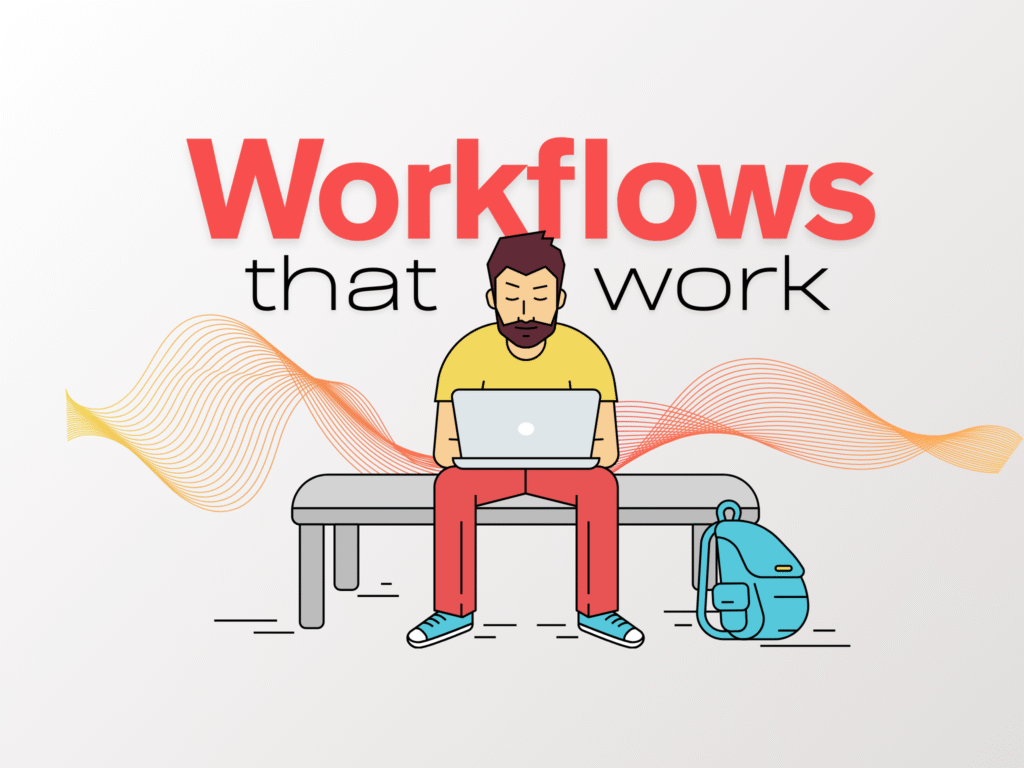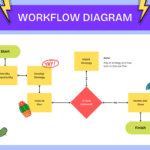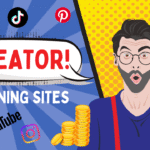Now Reading: The Rise of the Creator Economy
-
01
The Rise of the Creator Economy
The Rise of the Creator Economy

The creator economy has experienced explosive growth in recent years, emerging as a significant phenomenon within the digital landscape. This trend has been largely fueled by an increase in digital creativity, which manifests prominently through platforms that facilitate short-form content. Social media channels such as TikTok, Instagram, and YouTube have become the cornerstone of content creation, altering the way individuals engage and consume information. As these platforms evolve, they provide creators with numerous opportunities to monetize their work and generate creator income.
Several factors contribute to the rising popularity of the creator economy trend. First, the accessibility of technology has enabled a broader range of individuals to express their creativity. The proliferation of smartphones, affordable editing software, and easy-to-use content creation tools has significantly lowered the barriers to entry. Consequently, many aspiring creators can produce high-quality content without needing extensive resources or industry connections.
Another critical factor fueling this trend is the growing demand for personalized and authentic content. Audiences increasingly gravitate towards creators who share genuine experiences and perspectives, resulting in a more engaged and loyal follower base. Research indicates that consumers are more inclined to trust and invest in content produced by individuals rather than traditional brands, highlighting a significant shift in consumer behavior. By adopting a creator-centric approach, brands have begun partnering with creators to amplify their outreach and build deeper connections with target audiences.
Furthermore, the monetization opportunities for digital creators have expanded. From sponsorship deals and affiliate marketing to merchandise sales and subscription models, the potential for generating creator income has never been greater. As the creator economy trend continues to mature, it demonstrates an ongoing commitment to fostering diverse voices, transforming not only the digital landscape but also the way we perceive and engage with content in our daily lives.
How Creators Earn Money
The creator economy trend has revolutionized how individuals monetize their talents and passions. Creators today have access to multiple avenues for generating income, significantly expanding the notion of creator income beyond traditional employment. One of the predominant methods is through brand partnerships. In this arrangement, creators collaborate with companies to promote products or services, receiving compensation in return. This has become particularly prevalent on platforms such as Instagram and TikTok, where visual content drives engagement.
Another significant revenue stream is advertising, particularly on platforms like YouTube. Creators earn money through ads that play before or during their videos, allowing them to monetize their content based on viewer engagement. With the rise of the creator economy, many successful YouTubers have reported substantial earnings from this model, demonstrating its viability as a primary income source.
Affiliate marketing is also a lucrative option for creators. This involves promoting products and services and earning a commission on sales generated through personalized referral links. Many creators incorporate these links into their content, whether through blog posts or social media, illustrating the synergy between content creation and monetization.
In addition, the sale of digital products has gained traction. Creators can design e-books, printables, or downloadable designs tailored to their audience, providing added value while also boosting creator income. Online courses have emerged as another popular method, allowing creators to share their expertise in specific topics while generating a significant revenue stream. This trend often leverages platforms like Udemy or Teachable, which facilitate course creation and distribution.
All these methods showcase the dynamic nature of the creator economy trend, demonstrating how creators can significantly diversify their income streams. By leveraging different monetization strategies, creators can build sustainable careers, transforming their passions into profitable ventures.
Trending Creator Platforms
The creator economy trend has led to a surge in platforms specifically designed to support and empower creators across various niches. Among the most popular platforms, YouTube continues to be a dominant force, allowing video creators to monetize their content through ad revenue and subscriptions. Creators benefit from a vast audience and multiple revenue streams, making it an appealing option for those looking to increase their creator income.
TikTok has also emerged as a powerhouse in the creator economy, offering a unique format for short, engaging videos. The platform’s algorithm favors creativity and originality, enabling users to reach a broad audience with relative ease. Moreover, TikTok’s creator fund and brand partnership opportunities provide additional avenues for creators to monetize their content, thus contributing to their overall income.
Instagram remains a staple in the creator economy, particularly for visual content creators. Its features, such as Stories, Reels, and shopping capabilities, allow creators to engage more dynamically with their audience while generating income through sponsorships and affiliate marketing. Platforms like Pinterest and Etsy cater to creators of handmade and artistic products, allowing them to showcase their unique offerings while also facilitating direct sales and transactions.
Twitch, originally known for gaming, has diversified into various content areas, offering live streaming capabilities for creators in different niches. The platform’s unique subscription model and interactive audience features enable creators to build a loyal community while earning a sustainable income. Substack has become increasingly relevant for writers and educators seeking to monetize their textual content through subscription-based newsletters.
Course platforms like Teachable and Kajabi empower creators to share their expertise through online courses. These platforms offer robust tools for monetization and marketing, allowing creators to capitalize on their knowledge, thus enhancing their income potential. The rise of these trending platforms signifies a significant transformation in how creators build their brands, connect with audiences, and generate revenue in the evolving landscape of the creator economy.
Best Tools for Digital Creativity
The creator economy trend has seen a surge in the development and availability of tools designed to enhance creativity and streamline content management. For those navigating this new landscape, utilizing the right resources can be pivotal in boosting creator income and successfully engaging audits. Among these tools, Canva Pro and Adobe Creative Cloud stand out due to their robust features and user-friendly interfaces.
Canva Pro offers an intuitive platform that is accessible to users of all skill levels. It provides a vast library of templates, images, and design elements, enabling creators to produce visually appealing content efficiently. Features like the brand kit, which allows users to maintain consistency across their projects, and collaboration tools, where multiple users can work together in real time, significantly enhance the creative process. This accessibility ensures that creators can focus on their artistic expression while managing their digital output effectively.
Adobe Creative Cloud is another essential suite for serious creators. It includes powerful software such as Photoshop, Illustrator, and Premiere Pro, making it an all-in-one solution for photo editing, graphic design, and video production. While the learning curve may be steeper compared to Canva, the extensive capabilities provided by Adobe products offer unparalleled control and quality. The integration of cloud storage allows seamless access to projects across different devices, facilitating a flexible workflow, which is vital in keeping up with the fast-paced demands of the creator economy.
Other notable tools include TubeBuddy, which enhances the management and optimization of YouTube channels. It provides features such as keyword research, SEO suggestions, and performance analytics, empowering creators to maximize their reach and potential income on the platform. Overall, these digital creativity tools are responsible for empowering creators, allowing them to hone their skills, optimize their content, and thrive in the ever-evolving creator economy trend.
Affiliate-Friendly Companies to Recommend
The creator economy trend has witnessed robust growth, with numerous platforms evolving to support creators in their monetization efforts. One of the most effective strategies for creators is affiliate marketing, and several companies stand out for their affiliate-friendly policies.
Amazon Associates is perhaps the most recognized affiliate program globally. It allows creators to earn commissions by promoting a wide array of products available on Amazon. This program is designed for all types of creators, whether they run blogs, YouTube channels, or social media accounts. The flexibility of choosing products that resonate with the creator’s audience makes it a staple in their creator income strategies.
Another notable platform is Canva Pro, which offers a robust design tool for creators looking to enhance their content visually. Canva’s affiliate program allows users to earn commissions by promoting their premium subscription. This platform aligns well with digital creatives who frequently use visual content, making it a logical recommendation for followers seeking to improve their design capabilities.
PartnerStack is also gaining traction in the creator economy trend, providing an excellent option for affiliate marketing. This platform focuses on SaaS products, catering to a niche market within the creator community. By partnering with brands that offer software solutions, creators can earn a recurring income, thus maximizing their creator income potential. This aligns with a trend where more creators are looking for sustainable, long-term income streams.
In addition to these platforms, creators can explore programs from other affiliate-friendly companies such as ShareASale and Rakuten, which offer a multitude of affiliate options across various industries. By incorporating these companies into their monetization strategies, creators can foster a reliable source of income while providing valuable recommendations to their audience.
Community and Networking in the Creator Economy
The creator economy trend has reshaped the way individuals approach content creation, emphasizing the significance of community and networking as essential components. Building a supportive network is vital for creators, as it encourages collaboration and opportunities that can lead to enhanced creator income. Such interactions can take place through various platforms, including social media groups, online forums, and physical meet-ups, which serve as effective methods for fostering connections among creators.
Engaging with like-minded individuals allows creators to share experiences, learn from one another, and collaborate on projects. By joining niche-specific online communities, creators can access valuable resources, feedback, and support that can help enhance their content and broaden their audience. Additionally, these platforms often serve as spaces for sharing insights about monetization strategies, which is paramount for generating a sustainable creator income.
Forums such as Reddit or Discord, tailored specifically to creators in varying fields, provide opportunities to discuss projects, seek advice, and even find collaborators for joint ventures. By capitalizing on these networks, creators can gain exposure to fresh ideas and potential partnerships that can amplify their reach. Attending industry meet-ups and events also plays a vital role in expanding one’s network, as personal interactions often yield more meaningful connections compared to online exchanges.
Moreover, these supportive networks are crucial not only for collaboration but also for accountability. Creators who share their goals within a community often feel encouraged to stay on track, ensuring consistent growth in their respective domains. In strengthening their ties within the community, creators not only enhance their immediate creator income opportunities but also contribute to the overall evolution of the creator economy, fostering a fruitful environment for all participants. Together, these aspects significantly underscore the importance of community and networking in driving success within the creator economy.
Challenges Faced by Creators
The creator economy trend has significantly transformed the way individuals approach content production and income generation. However, as this ecosystem expands, creators face unique challenges that can hinder their ability to sustain their efforts and optimize creator income.
One major issue is income stability. Many creators rely on various platforms to monetize their content, yet this often leads to unpredictable earnings. Fluctuations in platform policies, shifts in audience engagement, and changes in monetization features can result in inconsistent income streams. This creates uncertainty for creators who depend on their platforms for financial stability, making it difficult to plan for the future.
Another challenge arises from the frequent changes in platform algorithms. These algorithms dictate what content gets visibility and engagement, often without warning. Creators may find their content being prioritized one day and overlooked the next, which directly impacts their ability to grow their audience and maintain creator income. Adapting to these changes requires continuous learning and adaptability, which can be taxing for many content producers.
Furthermore, competition within the creator economy is intensifying. With more individuals entering the field, standing out has become increasingly difficult. Creators must not only produce high-quality content but also find novel ways to engage their audiences. This drive to differentiate oneself can lead to creative burnout and overwhelm, particularly in a landscape where trends shift rapidly. To navigate this competitive atmosphere, creators must leverage their unique strengths while remaining attuned to evolving market demands.
Understanding these challenges can help creators strengthen their strategies and develop resilience in the face of the unpredictable nature of the creator economy. By recognizing the impact of income stability, platform algorithms, and competition, they can better prepare to thrive in this dynamic environment.
Future Trends in the Creator Economy
The creator economy trend is evolving rapidly, driven by advancements in technology and shifting consumer preferences. One of the most significant developments on the horizon is the rise of Web3, which is poised to redefine how creators interact with their audiences and monetize their content. This new decentralized internet model leverages blockchain technology and emphasizes transparency and ownership. As a result, creators could gain greater control over their work, allowing them to monetize directly through platforms that facilitate peer-to-peer transactions, thus enhancing creator income opportunities without relying solely on traditional advertising revenue.
Additionally, evolving engagement strategies are likely to play a pivotal role in the future of the creator economy. As audiences seek deeper connections with their favorite creators, we may see a shift towards more personalized content experiences. This trend can manifest in various forms, including exclusive membership models, live interactions, and behind-the-scenes access, allowing fans to invest in their preferred creators. Furthermore, enhanced interactive technologies, such as augmented reality and virtual reality, are expected to foster immersive viewing experiences that captivate audiences in unprecedented ways, ultimately driving higher engagement and loyalty.
Lastly, new monetization methods are emerging as creators explore innovative ways to generate income. Subscription models, digital goods, and even unique experiences or services are set to become mainstream. Crowdfunding platforms and patronage systems are also gaining traction, enabling fans to support creators directly and sustainably. These methods diversify creator income streams, ensuring financial stability in an increasingly competitive landscape. As the creator economy continues to thrive, mapping out these trends will be essential for understanding the transformative possibilities that lie ahead for content creators and their audiences alike.
The rise of the creator economy trend marks a significant shift in how individuals generate income through their unique talents and content. Over the past few years, we have witnessed an unprecedented growth in opportunities for creators across various platforms, reflecting a broader societal change where personal branding, niche communities, and direct audience engagement play pivotal roles.
Key takeaways from this discussion emphasize the diverse avenues available for creators to monetize their work effectively. From social media influencers generating revenue through sponsored content to artists exploring digital products and subscription models, the landscape offers a multitude of paths to creator income. As the trend continues to evolve, creators are encouraged to diversify their revenue streams, engage with their audiences authentically, and stay informed about emerging tools and platforms designed to facilitate content creation and monetization.
Furthermore, embracing technology and adapting to audience preferences are crucial components for success within the creator economy. As traditional barriers to entry are broken down, individuals have the potential to cultivate thriving careers by capitalizing on their passions and expertise. Encouragingly, as creators look to the future, the emphasis on community and collaboration will likely enhance their visibility and strengthen their income potential.
The creator economy presents a landscape ripe with opportunities for individuals willing to innovate and adapt. By leveraging the insights discussed, creators can enhance their journeys, seize upon current trends, and establish sustainable creator income that contributes to their livelihoods. The future of this dynamic economy holds promise, inviting creators to explore, engage, and thrive.























